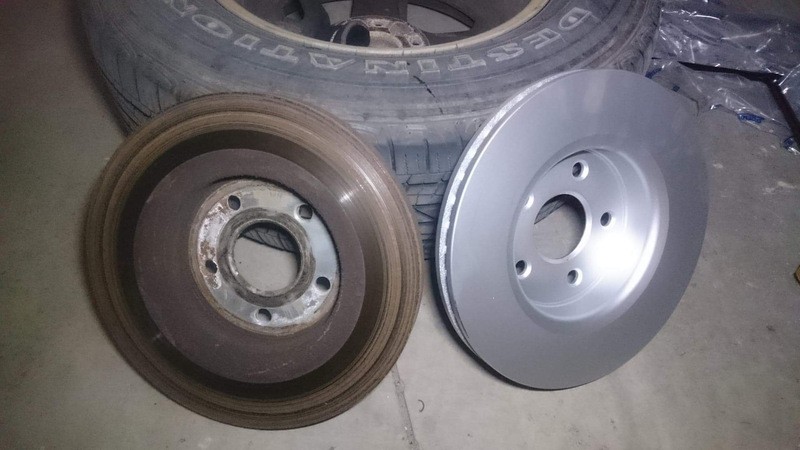
Driving safety is paramount, and understanding the nuances of a vehicle’s braking system is essential for both novice and experienced drivers alike. This exploration delves into the critical functions of front and rear brakes, elucidating their roles, and addressing the perennial question: Which brakes are more important for driving safety? To comprehend this topic thoroughly, one must consider various factors, including vehicle dynamics, the physics of braking, the significance of weight distribution, and the implications of maintenance practices.
Understanding the Fundamentals of Braking Systems
Braking systems in automobiles consist of various components, several of which work synergistically to decelerate or halt a vehicle. The primary types of brakes—disc and drum—can be installed on both the front and rear axles. Disc brakes, which are more prevalent in modern vehicles, offer superior performance under high-stress conditions, making them the preferred choice for front brake applications. Conversely, drum brakes are often found in rear setups, particularly in older models or less performance-oriented vehicles.
The braking system is designed to convert kinetic energy into thermal energy through friction. This process is intrinsic to both front and rear brakes, yet the distribution of braking force varies significantly based on the vehicle’s dynamics. Understanding how weight is transferred during braking maneuvers is integral to evaluating the importance of front versus rear braking systems.
Front Brakes: The Primary Stoppers
It is generally accepted that front brakes bear the brunt of the braking force due to the physics of weight transfer. When a vehicle decelerates, weight shifts forward, exacerbating the load on the front brakes. Studies have indicated that front brakes can be responsible for up to 70-80% of the total stopping power in many vehicles. This is critical to ensure driver safety, as effective front braking prevents skidding and maintains control during abrupt stops.
Moreover, the design of the vehicle’s suspension system and the presence of features such as anti-lock braking systems (ABS) further enhance front brake performance. When drivers apply brakes, ABS modulates brake pressure to prevent wheel lock-up, primarily targeting front brakes, which aids in maintaining directional stability. Additionally, front brakes often incorporate larger rotors and calipers to accommodate the higher thermal demands placed on them.
Rear Brakes: The Supportive Role
While front brakes often take precedence in the braking hierarchy, rear brakes are equally significant. The rear brakes serve crucial functions; they prevent rear-wheel skidding and contribute to overall vehicular balance. In situations where a driver may execute sharp turns or lane changes, efficient rear braking ensures that the vehicle remains stable and does not fishtail.
Moreover, high-performance vehicles often feature sophisticated rear braking systems that enhance performance and safety. In such settings, the rear brakes can be calibrated to provide varying levels of assistance during different driving conditions. Additionally, vehicles equipped with advanced traction control systems benefit from balanced rear brake functionality, which aids in enhancing grip and stability during acceleration as well as deceleration.
Weight Distribution and Its Impact on Braking
An exquisite understanding of a vehicle’s weight distribution can significantly affect driving safety and braking efficacy. Vehicles with a front-heavy bias, such as sport utility vehicles (SUVs) or trucks, will necessitate robust front brakes to handle the increased weight during braking maneuvers. Alternatively, vehicles designed for sports performance might feature more balanced weight distributions, requiring equally efficient braking systems across both ends of the vehicle.
Moreover, load conditions, including the weight of cargo or passengers, further complicate the dynamics of braking. Under fully laden conditions, the front brakes will still be under more stress due to weight transfers while braking, but the rear brakes must also function optimally to ensure stability and control. Thus, understanding these dynamics can assist drivers in making informed decisions about brake maintenance and upgrades.
Maintenance Practices for Optimal Brake Performance
Regardless of whether front or rear brakes are deemed more critical, maintaining both is vital for ensuring optimal performance. Regular inspection and timely replacement of worn pads and components are imperative. Brake fluid must be regularly checked and replaced, as old fluid can lead to diminished braking responsiveness.
Notably, drivers should pay attention to warning signs that indicate potential brake issues. These may include squeaking noises, a spongy brake pedal, or uneven braking responses. Ignoring such symptoms can lead to catastrophic failure, underscoring the importance of proactive maintenance. Professional inspection is advisable, particularly for vehicles tasked with heavy usage or performance demands.
Conclusion: The Symbiotic Relationship of Front and Rear Brakes
In conclusion, while front brakes are typically regarded as the primary stoppers due to their role in dynamic weight transfer and braking efficacy, the importance of rear brakes cannot be overlooked. A well-functioning braking system hinges on the seamless interaction between both front and rear components. Understanding these complexities allows drivers to appreciate the significance of each and take preventive measures to ensure a safe driving experience. Thus, both brakes are indispensable to driving safety, and neglecting either can have grave consequences. Therefore, a comprehensive approach to brake maintenance and safety will ultimately culminate in a more secure driving environment.
